DIY liquid wallpaper: a master class on making

Making liquid wallpaper with your own hands is an unexpected solution that will make your home unusual, beautiful, and cozy.
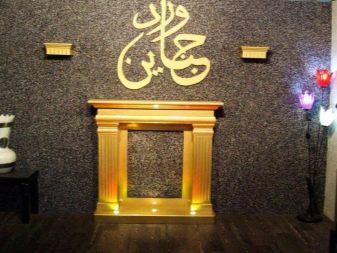
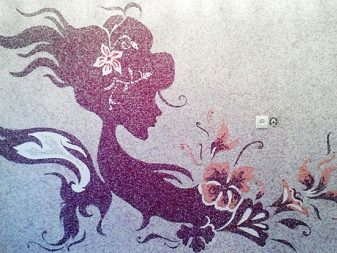
Peculiarities
Liquid wallpaper is an unusual covering for walls and ceilings, which differs from the usual wallpaper in that there is no usual canvas in the form of a roll. But at the same time, they perfectly cover the surfaces, while decorating them at the same time. Due to the varied composition, the walls and ceiling can be smooth, slightly rough or embossed, resembling marble chips or soft silk.
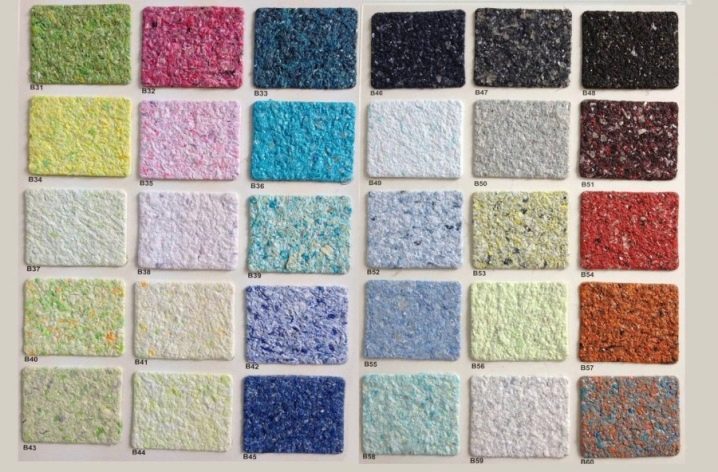
The composition of this unusual coating:
- natural fibers - base in the amount of more than 95% (cellulose, silk or cotton);
- water-based acrylic dyes will give color to the composition;
- an adhesive component (most often CMC - carboxymethyl cellulose - white granular powder with a disinfecting component) will bind the composition and keep it on the surface;
- additional components will become decor (for example, sparkles).
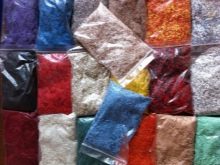
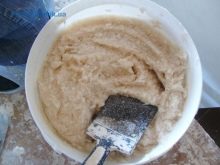

Based on the predominant basis, such a material is called cotton, silk or cellulose liquid wallpaper. Cotton is an environmentally friendly material (however, like other types), pleasant and warm to the touch. Silk ones are distinguished by the fact that they can be applied to concrete and plasterboard coatings, as well as they lend themselves well to fragmentary replacement. Pulp - the most economical option, made from recycled wood (sawdust and paper).
All types of liquid wallpaper perfectly hide microcracks on surfaces, for which they enjoy the well-deserved love of home craftsmen and professional finishers.

Advantages and disadvantages
This type of coating turned out to be a real find due to the large number of advantages. According to the reviews of those who did such repairs on their own, their following features can be noted:
- the wallpaper is environmentally friendly;
- they are easy to apply on the wall, even without experience in such work;
- there are no unpleasant odors during the application process;
- it is easier to work with them than with roll models, since no space is required for applying glue to the canvases, and there is no need to wait for the soaking time of the canvases;
- with such a composition it is very convenient to trim corners, arches, ceilings, niches, spaces around doors and windows;
- they will hide microcracks and minor irregularities on the surface;
- wallpaper absorbs and releases excess moisture;
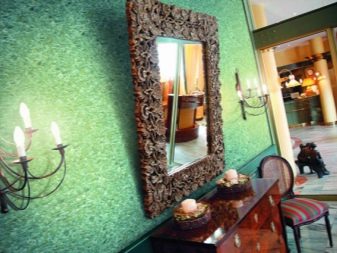
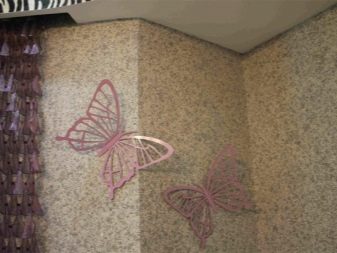
- minor repairs are practically invisible on them, when the damaged fragment of the coating is removed and replaced with a new one;
- the composition can be soaked, removed from the wall and used more than once in the same or another room;
- you can do the same if you need to make some change in the relief of the wall (for example, grind for new wiring);
- there will be no seams, joints and air bubbles on the surface;
- the wallpaper does not fade even after 10 years;
- they repel dust due to their anti-static properties;


- this is a waste-free production - the remaining mass is dried and used as needed;
- the canvas can be made not only monochromatic, but also create a drawing, applique, panel;
- any kind of composition is pleasant to the touch;
- the mixture is fireproof.
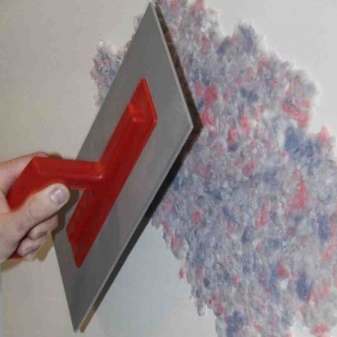
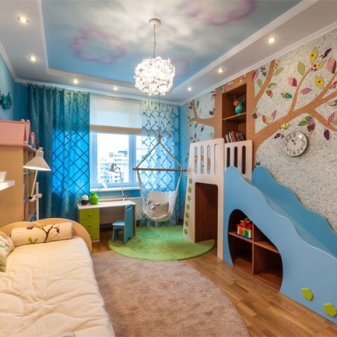
Someone calls a 48-hour drying time long and classifies it as negative. But after all, ordinary wallpaper also completely dry out in about this time. The possibility of using in damp rooms is controversial.However, there are many examples of liquid wallpaper in bathrooms and kitchens.
But there should be nothing metallic on the wall, otherwise rust will seep through the wet wallpaper.
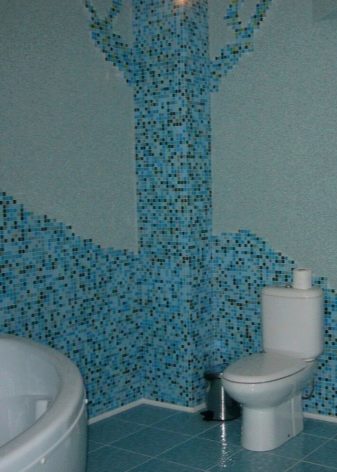

The surface should not have deep flaws, such defects will be visible after drying. The base on which the mixture is applied must be in tone (otherwise it will shine through the wallpaper). What customers absolutely dislike is the high price when buying a mixture (about 1,000 rubles per package, which is enough for 3 m2).
Instruments
The composition for application to the surface must be plastic, with good adhesion, not too fast drying, so that the surface can be corrected after a few hours. It is for such characteristics that tools need to be selected. You can get by with a minimum (one trowel), you can do it with a maximum. We will tell you about it.
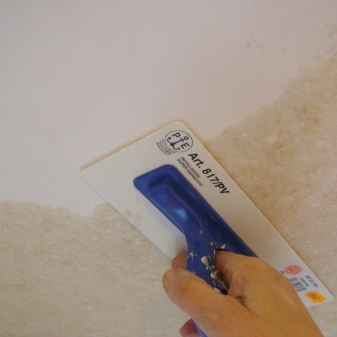
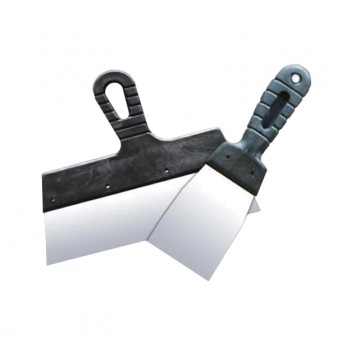
The choice of tool depends on the consistency of the composition and the habits of the master. Typically, every home has trowels of different widths. With their help, it is convenient to prepare the wall for work (remove old wallpaper, putty large holes). But they can also apply the composition to the wall or ceiling. In this case, you can prepare metal, acrylic or plastic spatulas.
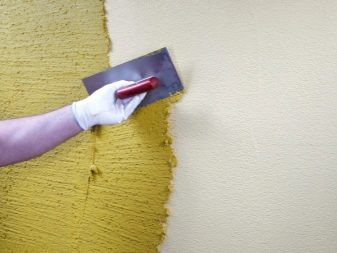
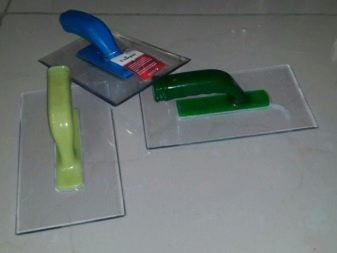
With their help, you can apply the mixture to the wall, and then level it with a trowel or evenly distribute the layer over the surface with a spatula. Someone likes to work with a hard tool, others will be satisfied with a spatula for leveling ordinary wallpaper. There are corner spatulas for applying the mixture in the corners. But not everyone likes them, it is much easier to apply and smooth the mixture directly with your hand.
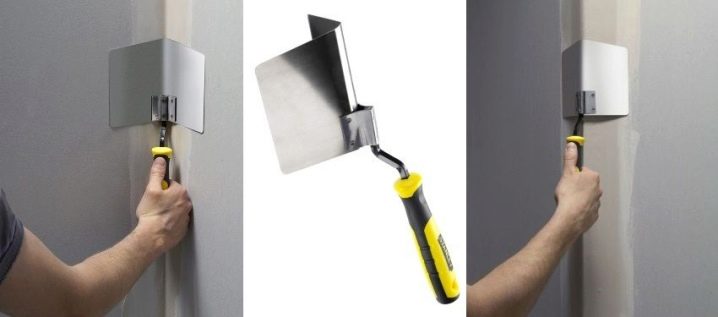
A trowel is a tool with a rectangular, trapezoidal, oval or iron sole for leveling the composition over the surface. A handle is attached to the plexiglass or metal in the middle, which helps when working. Professionals prefer plexiglass, because it is convenient to control the applied layer through it. When grinding the material, the trowel is never applied completely, but only at a slight angle (otherwise, when detaching the trowel from the wall or ceiling, the mixture may end up on the tool and not on the surface).
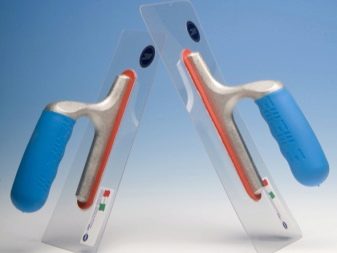
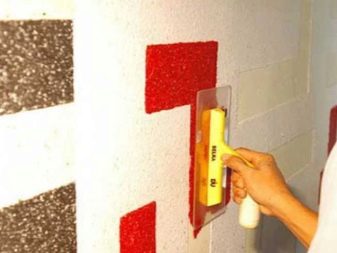
The trowel can be metal, the main thing is with a smooth surface. When distributing the next portion of the mixture over the surface with a trowel, they lead first up, then down, and end in a circular motion. If such a tool is not in the arsenal of a home craftsman, then it must be purchased. This will greatly speed up the work.
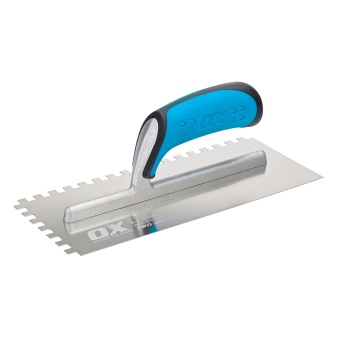
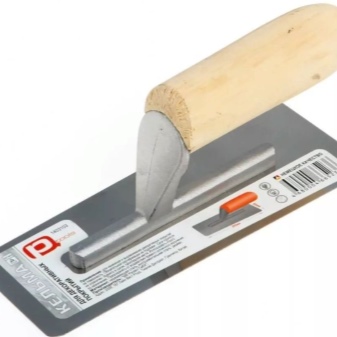
Another tool is a transparent float. It is very similar to a trowel, but more often has a different handle shape. Its task is to level the layer a few hours after application, when it becomes visible that the layer has defects and is uneven on the surface. To level it, the grater is moistened in water and carefully, but with some effort, the coating is compared.
If the wallpaper is dry, then it is moistened with a spray bottle.
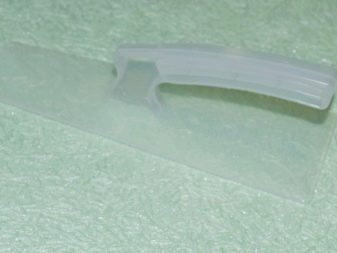

The next tool is a roller for leveling (used instead of a float) and applying liquid wallpaper to the surface. For the first action, it is permissible to use any short-haired roller, which is moistened in water before use. Instead, you can pre-wet the surface with a spray bottle. The roller is carried over the wallpaper, pressing and aligning it.
If the surface is too smooth, then using a ribbed roller you can add relief.
To do this, it must be moistened with water, and, pressing strongly, walk along the surface.
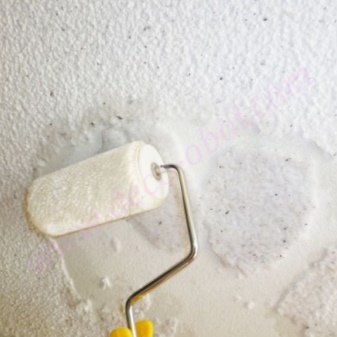
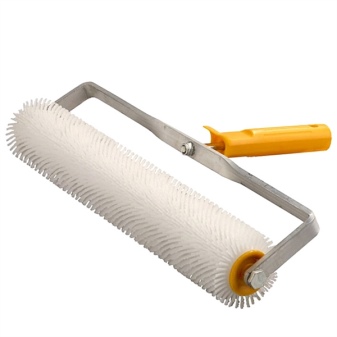
With a liquid and homogeneous consistency, the mixture can be applied with a roller to walls and ceilings. For this, a tool with a thin nap is suitable, which must be sufficiently rigid. Then the mixture will not stick to the villi, but will lie flat on the walls.
A hopper pistol is used to treat a large surface area.
This is a convenient container where the mixture is placed.An even layer is applied under a pressure of 2 atmospheres with such an electric apparatus (for a working day it can be 200 m2). But it takes physical strength to hold it.
Thus, whether to buy a lot of tools or get by with a minimum is an individual choice of a home craftsman.
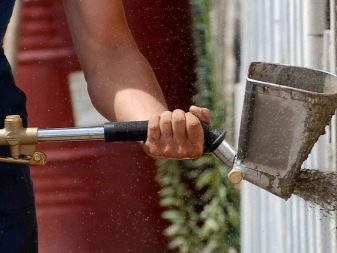

Factory coatings
Today, liquid wallpaper is produced on an industrial scale in many countries. This allows buyers to choose what they like best. Moreover, even a foreign manufacturer often has its own factories in Russia, which significantly reduces the cost of wallpaper mix.
According to the reviews of experts and ordinary buyers, the products of the following brands are of the highest quality:
- Leroy Merlin (France, production is deployed in many countries);
- "Bioplast" (Russia, Belgorod, sells products to several CIS countries);
- Silk Plaster (Russia, Moscow, sells products to many countries of the world).
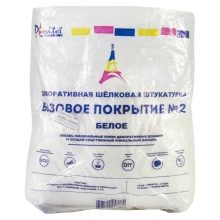
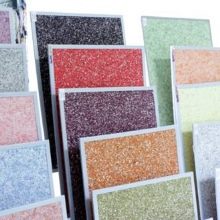
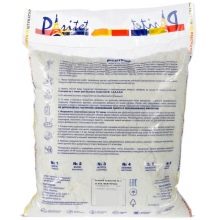
Leroy Merlin products are French quality decorative plaster. It does not require a perfectly flat surface before application. It does an excellent job of soundproofing. Wallpaper is elastic, which will allow the coating not to crack even after the house has shrunk. The basis is silk, cotton or polyester. The binder is acrylic dispersion. The composition is diluted with water.
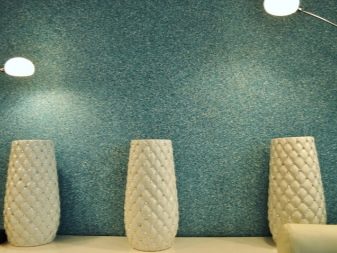
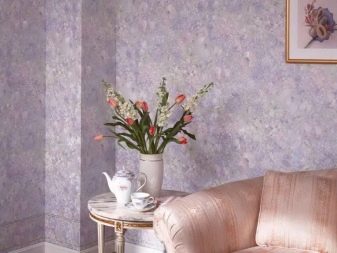
The company "Bioplast" is Russian, but has representative offices in the CIS countries. Unfortunately, not all dealerships fulfill their obligations honestly. As a result, substandard materials appeared that turned out to be harmful to health. Buyers like Bioplast products, but they need to choose Belgorod production.
The advantages of these mixtures:
- compliance with all production standards;
- easy application to the surface;
- various colors;
- providing heat and sound insulation.
Also, users say that these mixtures have all the benefits of liquid wallpaper.
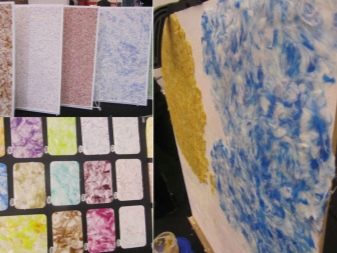
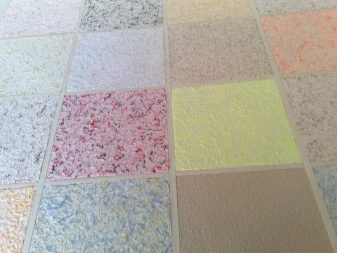
Silk Plaster is one of the most popular manufacturers. These products are safe, they cope well with mechanical stress, sudden changes in temperature, and very high humidity. The mixture is sold in semi-finished form: the contents are diluted with water and the fibers are waiting for the fibers to get wet. But buyers pay attention that their colors are much poorer than the aforementioned manufacturers.
But there are other manufacturers: Polish Poldecor, Russian Casavaga, Japanese Silkoat, Turkish Bayramix Koza. Buyers have a lot to choose from. The main thing is not to skimp on quality, so that in a year such wallpaper plaster does not fall off the wall or ceiling. Or make liquid wallpaper yourself.
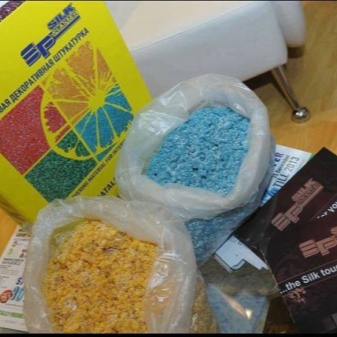
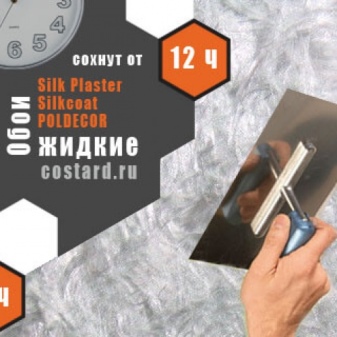
Materials (edit)
Indeed, after making sure of the positive qualities of liquid wallpaper, it is quite possible to make them with your own hands at home. To do this, you need to think about what will act as the basis (you need it most of all), fillers and binder.


The foundation
The cheapest base option is paper. In this case, you should be aware that glossy paper will not work - it will not disintegrate into the necessary fibers. It is advisable to use waste paper with the least amount of printing ink, such as egg trays or toilet paper. But you can take old newspapers and magazines. The ideal option is old porous wallpaper. Moreover, they can be exactly from the room where the renovation is planned.
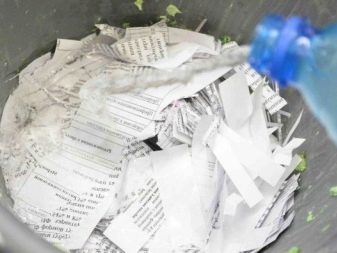
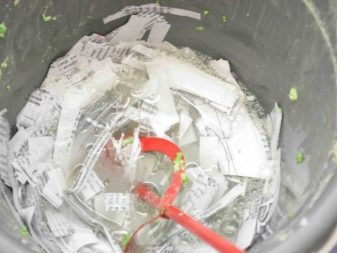
Also, medical cotton wool or synthetic winterizer can be used as this component in the ratio of 1 kg of paper to 0.250 g of cotton wool. Cotton wool must be finely chopped, disconnected into fibers. But cotton wool, synthetic winterizer or insulation version of "ecowool" themselves can act as a basis without the use of paper. Wool, linen or polyester fibers can also play this role.
There is a material that you don't even need to cut - sawdust. An excellent base for environmentally friendly wall and ceiling coverings. If the hostess has a large amount of old yarn in the stocks, then it can act as the basis. Then it also needs to be crushed.
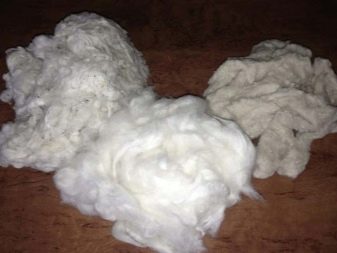
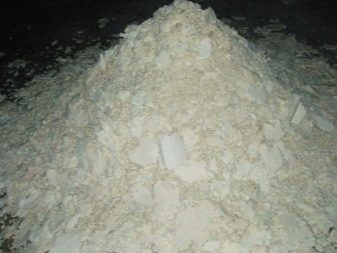
Excipients
If there is not much yarn, then it can act as a filler. Long multi-colored or single-colored fibers will look very nice among the base. Also, the filler can be colored threads, sequins (glitter), pieces of fabric, tree bark, mica powder, stone chips, pieces of dried algae. The total amount of these components should not exceed 200 g per 1 kg of base.
It is important to remember that the finer the base and fillers, the smoother the wall will be. To obtain a more pronounced relief, the number of components should be greater.
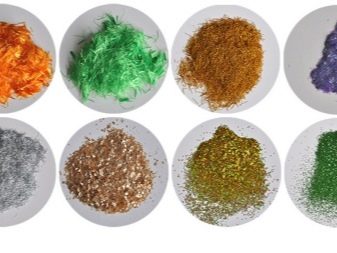
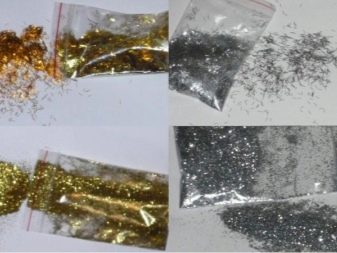
Binders
Experts recommend binding the composition with CMC wallpaper glue based on modified starch. It is an inexpensive glue, but it has an anti-fungal effect, which is very important, especially for wet rooms. For 1 kg of paper, you need 120 -150 g of dry powder.
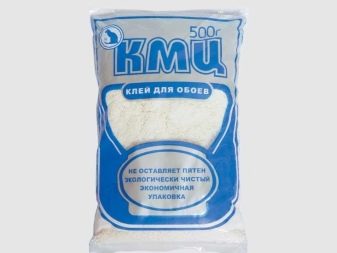
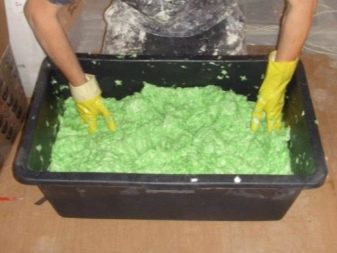
In addition to CMC, you can use Bustilat, PVA glue or casein wallpaper. An acrylic putty can be used instead of glue. It will be more difficult to work, but the wallpaper will turn out to be more abrasion resistant. There are two more components that can act as binding components - gypsum or alabaster. But it will be much more difficult for a non-professional to work with them, since alabaster dries quickly, and the speed of work must be very high.
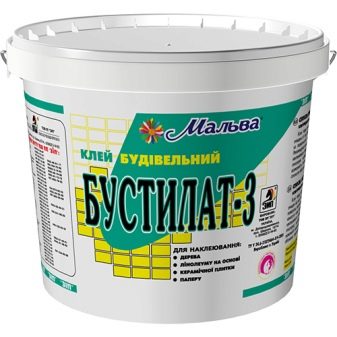
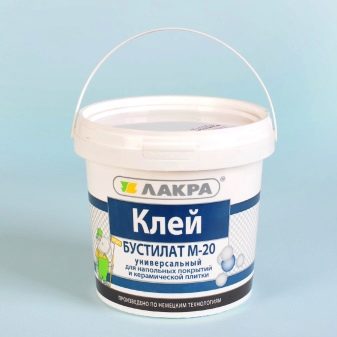
Dyes
You need to purchase dyes that are added in the production of water-based paints. To obtain a uniform color, the color is added at the time of mixing all the components. If there is a desire to obtain a heterogeneous composition, then you need to intervene the color scheme twice: the first time thoroughly mix with all the components, the second - add to the container and mix slightly before applying to the wall.

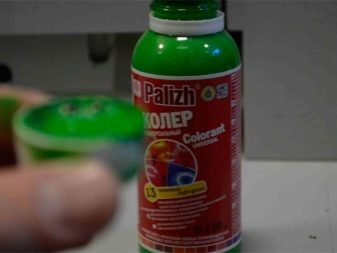
Manufacturing methods
Before starting work using paper as a base, you need to prepare it. Paper and cardboard are torn into small pieces and soaked in cold water for 12 hours. If old newspapers and magazines are used, the ink will be gray from the ink. It can be bleached (but unfortunately not completely) with chlorine or oxygen bleach. Chlorine will have to be neutralized with sodium thiosulfate.

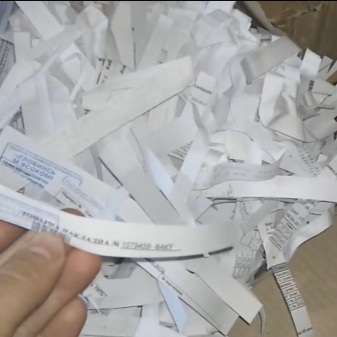
Whitening can be performed several times. But in the end, the paper should be rinsed and wrung out. After that, it is crushed with a drill with a special nozzle. To facilitate the process, water is added to the container (for 1 kg of squeezed paper, 1 liter of water). When the paper is ready, it needs to be combined with other components.
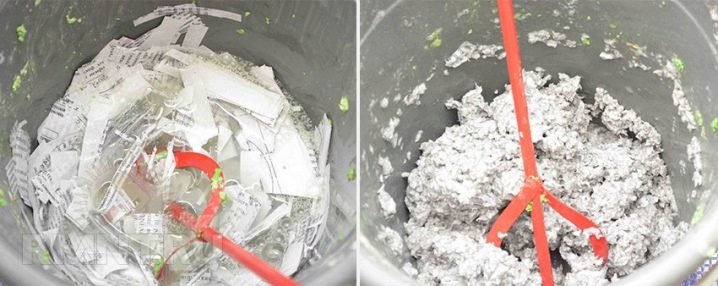
To do this, you need a large basin, into which a little water is poured. In case glitter is used, stir it in the water first. Then the paper is dumped there and glue is introduced. After thoroughly mixing, the mixture should resemble soft curd. Then the remaining components are added, including the color scheme. After re-kneading, the mass is transferred to plastic bags, closed and left for 6-8 hours to ripen.
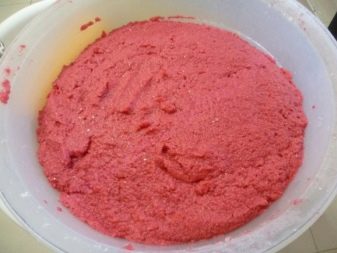
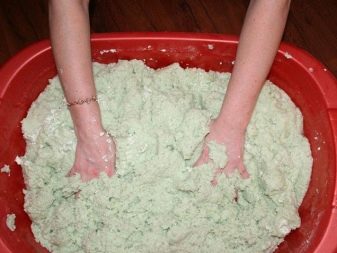
If sawdust or other material acts as the basis, time will be saved on softening. The base is mixed with the adhesive in a 1: 1 ratio, the remaining components are added. The amount of water can be different, you need to add it little by little. Then the mixture is placed in a bag and left to ripen (7-8 hours).
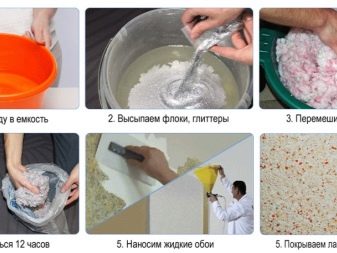
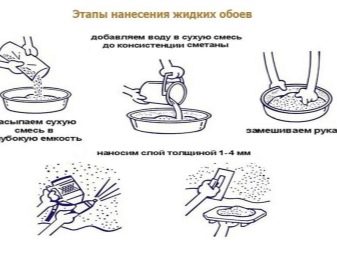
Detailed master class:
So, to prepare the mixture yourself, it will take much longer than the store version. But this work is not difficult. And the right to choose remains with the home craftsman: make the composition yourself or purchase it in the store.
When the mixture has gone to ripen, this time can be used in order to prepare the walls, if this has not been done before. If you are not completely sure of the quality of the coating or you have to work with a new wall (ceiling), then it is worth preparing the surface in advance.

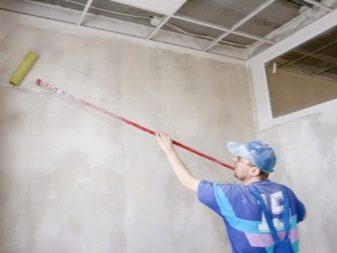
Preparing the walls
Particular attention to this issue is due to the fact that liquid wallpaper is called so because it is based on liquid, which, connecting with the surface of the wall, will absorb everything that is there. As a result, not only rust from metal nails and similar elements can appear through the wallpaper, but also stains from oil paint, dirt, etc. Therefore, this work must be done very well. The work algorithm will be as follows:
- Removing the old wallpaper from the surface. If there is another coating on the wall, then you need to remove the falling off putty, as well as oil paint or whitewash.
- Putty problem areas, not attaching great importance to microcracks.
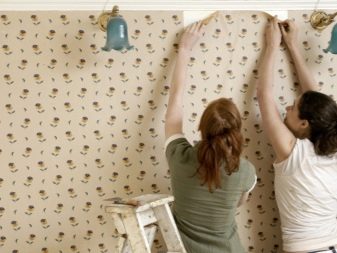
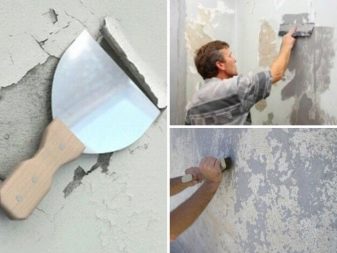
- Bare concrete or brick should be treated with a gypsum filler mixture so that it absorbs less moisture. Other types of surfaces will benefit from a good impregnation or primer. Moreover, you need to primer 1-3 times so that the wall is really monochromatic. Drywall requires a special approach. Often only the seams are treated. When working with liquid wallpaper, this option will not work, since the seams will be noticeable after the mixture dries. The entire plasterboard structure is completely primed to a uniform tone.
- If tinting is used, it is better to cover the wall with the same color first. This will give a uniform surface, the wallpaper will not shine through.
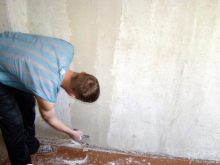
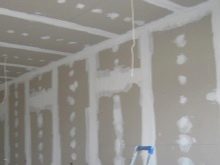

- It is worth checking again if there are any differences in the surface level of more than 3 mm. It is easier to do this on a freshly painted surface. If, nevertheless, there are such, then you should not be lazy, you need to level the wall and prime again.
Do not forget that, unlike other wallpapers, liquid ones are very good at airing. It is better to stick them in the warm season. The room temperature should be above 15 degrees.
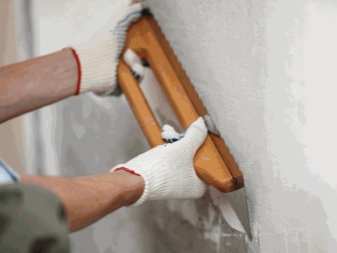

Determine the proportions
It is rather difficult to name the exact proportions. After all, different materials of different sizes will be used. But the master's landmark is called this: on a surface of 4-5 m2, 1 kg of paper, 5 liters of water, 1 kg of glue will be required. Knowing the area to be coated, you can calculate the approximate material consumption.
If sawdust is the basis, then for the preparation of the mixture the proportions will be as follows: 1 kg of sawdust, 5 liters of water, 0.5 kg of glue, 0.5 kg of gypsum, antiseptic and dye, as well as decorative fillers.
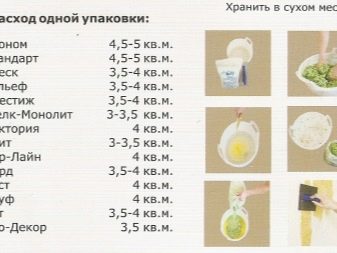
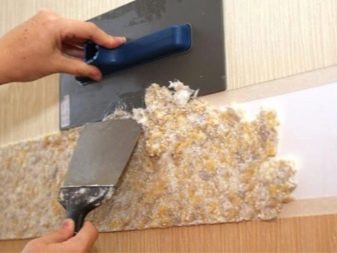
How to apply?
Since several bags with the mixture were soaked in advance, each of them cannot have exactly the same composition. After all, even a few grams of color scheme will give a different shade. Therefore, experts advise to prepare the final composition before applying to the wall as follows: take equal portions from each bag and mix thoroughly in a container.
You need to start finishing from the window. After an hour and a half of work, walk again and level the surface. This is already done with a grater moistened with water. The movements are counterclockwise.
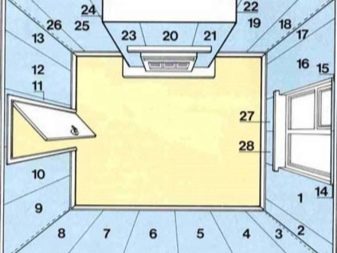
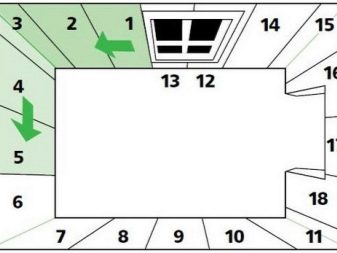
Apply a small amount of the mixture to the wall by hand or with a spatula. Attach the trowel to the wall at an angle of 15 degrees and start leveling the mixture up, down, right, left. The last movement is circular. The wallpaper layer should be no more than 1 cm, but most often it is made 2-4 mm thick. Once the coating has been leveled, take the next batch and do the same.
The good thing about liquid wallpaper is that you do not need to suffer with corners, as when pasting other types of wallpaper. The mixture is applied by hand to the corner, leveled. This makes it much easier to make the corner even.
The application technology will change if there is a drawing or stencil on the surface.
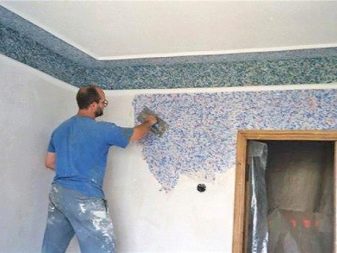
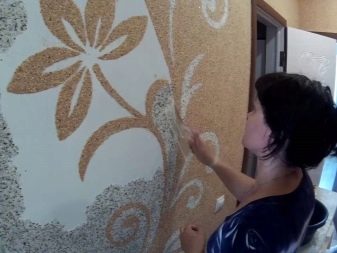
Decorating
Decorating a surface with drawings can be difficult for beginners. Indeed, on a large area, you need to take into account the proportions correctly. Decorators recommend the following trick. A sketch of the drawing is applied to a piece of glass. The beam of a table lamp is directed to the wall to be decorated, in front of which a glass with a sketch is exposed. This is how the drawing is reflected on the wall. It needs to be transferred to the wall after priming it, and then work with liquid wallpaper.This trick will help create any beautiful drawing. The time interval between coatings of different colors is 4 hours.
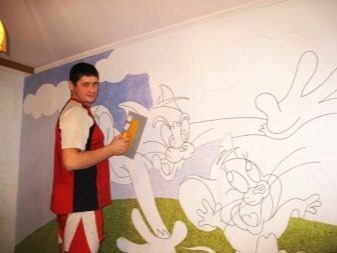

It is much easier to work with a stencil. It can be created for one use (for example, sun with rays, car) or for multiple uses (floral ornament). This means that the base for the stencil must be strong enough: hard cardboard, plywood. The stencil is applied to the wall, a patterned one-color or multi-color drawing is made on it. Then use liquid wallpaper of a different color around the image.
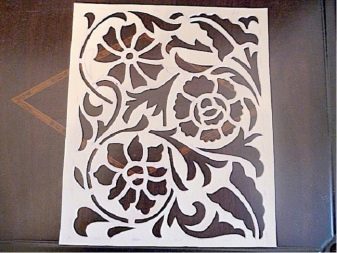
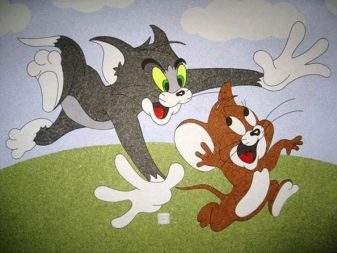
But you can decorate in other ways. For example, using applique or three-dimensional pattern from the same liquid wallpaper. And if the surface of the wall is chosen to be monochromatic, then you can decorate it with volumetric figures.
The use of reflective materials in the mixture (mica powder, glitter) will help create a unique color with the right backlight. Wall sconces in combination with such a decor will create an unusual atmosphere and decorate the room.
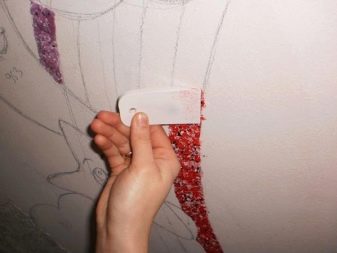
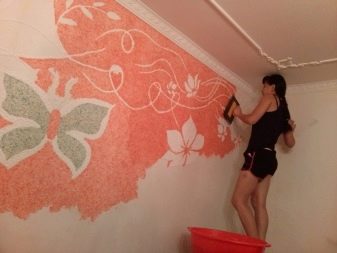
Care
Natural liquid wallpaper is a breathable material. But in this state, it is not subject to wet cleaning. To keep the coating longer, it is covered with acrylic varnish. So the wallpaper really gets dirty less, you can gently clean it with water. But the breathable effect is lost along with the application of varnish. Therefore, some people decide that it is better to replace the stained piece of wallpaper than to varnish the entire area.
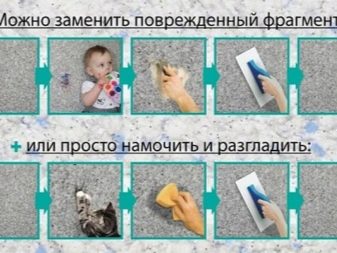
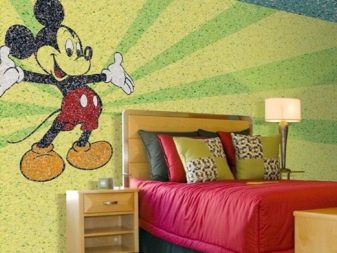
Examples in the interior
Thanks to the multi-colored colors, the wallpaper can be of completely different colors. This is exactly what the authors of this unusual decor took advantage of. A bright accent can hide flaws in coverage and deservedly attract attention.
Liquid wallpaper is a convenient material not only for home comfort, but also for a strict office, hotel complex and museum space. Strict classics and home comfort are subject to this unusual finish.
Long coarse fibers, which create a crinkled effect, are a good option for the filler. The drawing becomes large and does not require additional decoration.
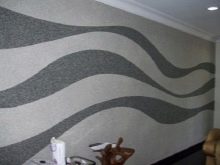
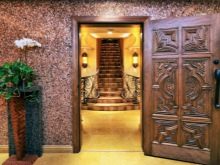
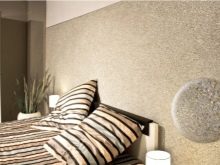
The use of a large number of colors requires skill in work and special care. In addition, each previous color must be allowed to dry if, as intended, the colors have clear edges.
If the surface of the wall is a full-fledged picture with a smooth transition of colors, using different shades, then it deserves the highest mark of the artist's skill.
For information on how to apply liquid wallpaper, see the next video.













The comment was sent successfully.